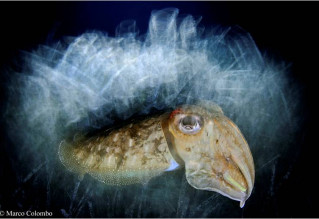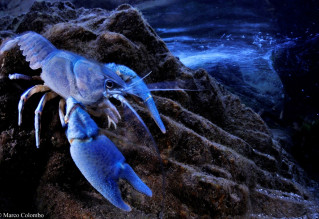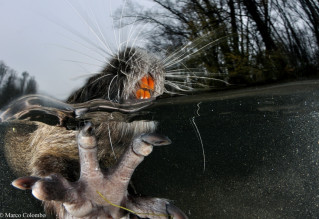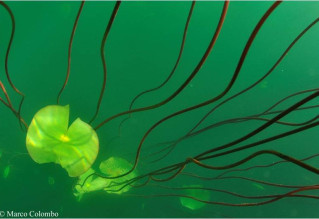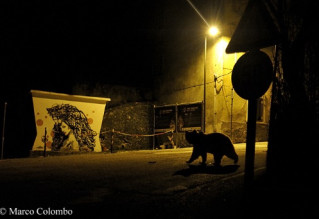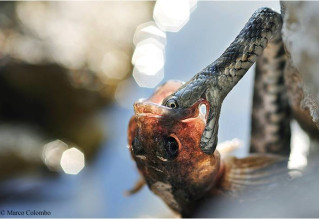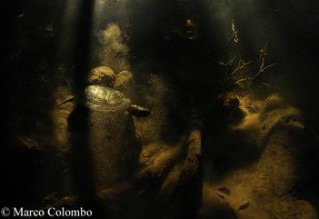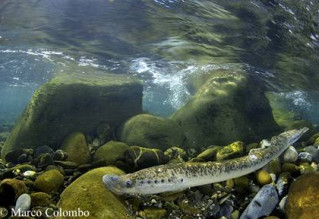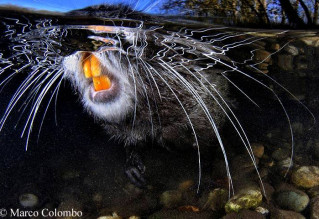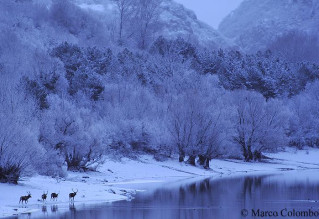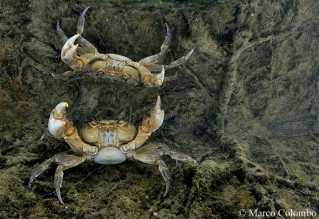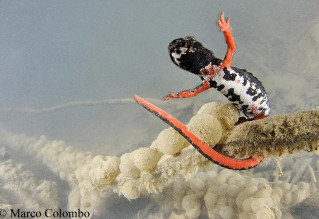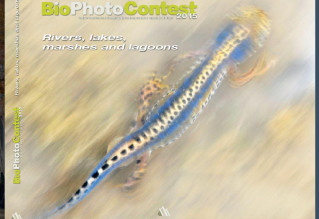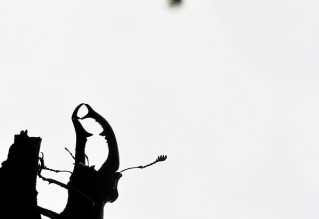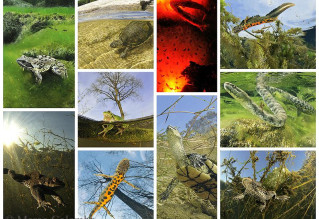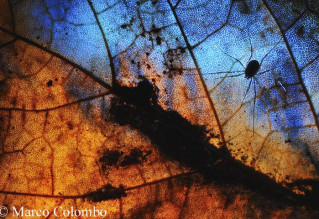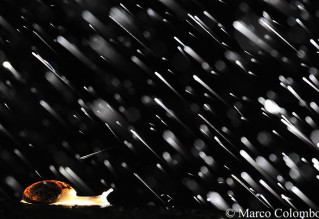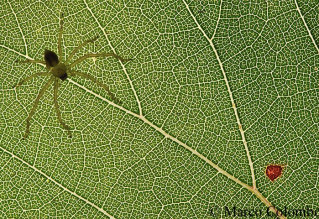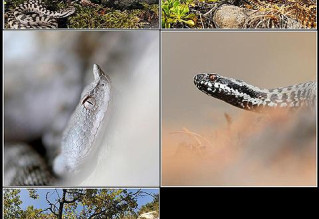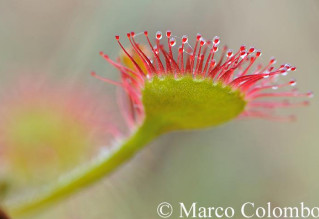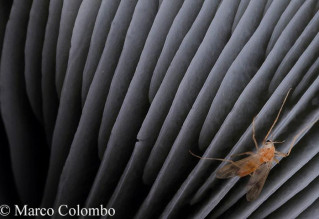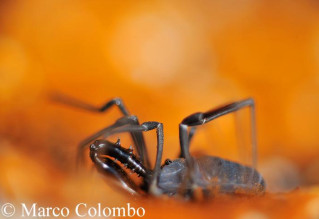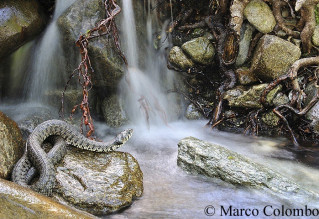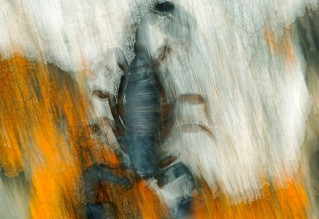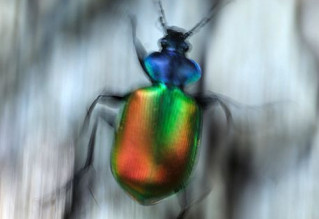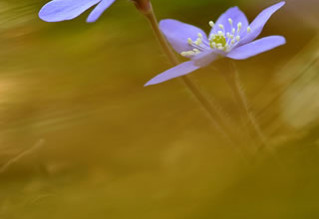Photo Contests and Awards
Asferico International Photography Competition 2021, second prize (Underwater world)
Cuttlefish watercolor (Sepia officinalis)
A still, hovering beauty, the cuttlefish gently swims on the Posidonia meadow, breaking the dark with its alien-like appearance. Always in love with night dives, I keep on going in the same little bay, discovering each time something new. Sometimes is a species I have never seen before, sometimes is a rarely seen behaviour, but sometimes you can try to portray common species in an unusual way. That’s why I decided to use a slow shutter speed and strobes in order to realize this “watercolor effect” on the background, that isolates the subject but also celebrates its undoubted beauty.
Asferico International Photography Competition 2020, second prize (Underwater world)
River’s cobalt (Austropotamobius pallipes, blue mutation)
White-clawed crayfish is endangered by pollution, habitat alteration, poaching for culinary purposes and introduction of alien species. Standard colouration is a variety of brown shades, from tan-light to dark walnut; however, in rare occasions blue specimens can be found. Reasons for this beautiful colour are diverse and not yet deeply understood by scientists: river crayfish can become pale blue when they moult, but in this case their esoskeleton is soft and they tend to remain deeply hidden in cracks or under boulders to avoid predators; after few hours, they get the normal colour. In other cases, blue crayfish owe their aspect to environmental factors, as diet and minerals, but according to experts sometimes a genetic mutation is associated too. In fact, the brown colour we see in crayfish is due to pigments, astaxanthin and other carotenoids, and when the animal is unable to synthetize astaxanthin, the only visible colour becomes emocyanin’s blue. In some rivers, as the one where I took this photo, the mutation can be not so uncommon, but in general they are very rare to see; their beautiful aspect makes also them vulnerable to collection for acquaria by irresponsible passionates.
Asferico International Photography Competition 2020, second prize (Mammals)
Invasion (Myocastor coypus)
Biodiversity erosion has one of the biggest factors in alien species, and maybe it is one of the worst ecological problems in the last times; introduced animals and plants, in fact, tend to alterate local habitats and ecological chains, with strong impacts and often extinctions of endemisms and fragile species. The coypu is a nice rodent that comes from south America but has been widely introduced in Italy, where it thrives in rivers and lakes, mainly damaging the shores and vegetations, as well as ground-nesting waterfowl. Even though it is a confident species outside water, it’s not so easy to approach it in the water. Luckily, after some years with my idea in mind, I found some confident coypus that helped me in realizing it. In this split shot in particular, also showing the iron-rich teeth, the extended paw in foreground recalls the advance and conquest of alien species in habitats, even though they are not the real guilties.
Asferico International Nature Photography Competition 2019, second prize (Plants and fungi)
Wildlife Photographer of the Year 2018 (BBC), category winner (Urban wildlife)
Crossing paths (Ursus arctos marsicanus)
A shadowy movement caught Marco’s eye as he drove slowly through a village in the Abruzzo Lazio e Molise National Park in Italy’s Apennine Mountains. It was late evening, and he thought there was a chance that it might be a Marsican brown bear rather than a deer waiting to cross the road. Stopping the car, he switched off the lights to avoid stressing the animal. Having enough time to change the lens, he then had just a minute to take a shot through the windscreen as the bear walked out of the shadows and across the road, disappearing into the darkness of the woods. Though the light was poor, the backdrop made up for it, complete with nature-tourism posters. Most Marsican brown bears – an isolated, unaggressive and critically endangered subspecies – stay well away from humans. A few individuals, though, venture into villages to raid vegetable gardens and orchards, especially in the run-up to winter hibernation, when they need to lay down fat. This puts them at risk of being hit by cars, of retaliatory poisoning and of harassment: video clips have appeared on social media made by chasing the bears in cars. With just 50 or so bears remaining, every death is a disaster. Coexistence is possible, but only if both parties keep a respectful distance. Methods such as electric fences around orchards help deter bears from coming into the villages, and education can protect both bears and the nature tourism they attract.
Fotografare il Parco 2017 Photo Contest, commended (macro)
Wildlife Photographer of the Year 2016 (BBC), category winner (Reptiles and amphibians)
Little treasures (Emys orbicularis)
The summer heat of the Italian island of Sardinia had reduced the mountain river to a series of small pools, but undeterred, Marco eased himself into the turbid water. His quest – part of a project to highlight the biodiversity of freshwater environments – was the shy European pond turtle. Despite its wide distribution in central and southern Europe and beyond, many populations are declining, threatened by water pollution, habitat loss and the introduction of competing American red-eared terrapins. Individuals that have a speckling of yellow or gold across their dark shells and skin are also caught illegally for the pet trade. When Marco was forced to rely on natural light (his strobes failed), his challenge was to stay focused on the turtle as it moved across the shadows, stirring up mud and debris. ‘Conveying a sense of place was essential,’ explains Marco. So he kept the shot wide, embracing the drama of the sunbeams falling through gaps in the riverside vegetation to illuminate his atmospheric portrait.
Asferico International Nature Photography Competition 2016, highly commended (Underwater)
River treasures (Petromyzon marinus)
Sea lampreys, after a life parasitizing big fish and cetaceans with their sucker-like mouth adapted to suck blood, migrate upwards in the streams, where they dig a nest in the bottom moving up to 10kg of pebbles, fighting strong currents, and then mating and dying. Eyeless larvae filter the water for some years, then metamorphose and migrate towards the sea. This is a very difficult species to be found in Italy, even because it is endangered by dams construction and other habitat alterations. A real “treasure of the river”.
Asferico International Nature Photography Competition 2016, category winner (Other animals)
The cove (Emys orbicularis)
One day I went to the river in order to photograph pond turtles. Once there, I realized the summer harsh had reduced the river to little pools, then I entered in the water and my strofe stopped working. As I couldn’t open them (covered in mud) without flooding, I decided to concentrate on natural dramatic light, thanks to sunbeams filtering from the branches outside, and portraying a turtle in this environment of golden lights and shadows.
“Fotografare il Parco 2014” Photo Contest, commended (macro)
Festival Mondial de l’Image Sous-Marine 2014, Plongeur de Bronze (Portfolio)
Marshes and scales
A ten images portfolio to show the beauty of some Italian reptiles and amphibians living in marshes, ponds and rivers, an important treasure to be preserved (Rana temporaria, Bufo bufo, Emys orbicularis, Hyla intermedia, Triturus carnifex, Lissotriton vulgaris, Natrix tessellata).
GDT European Wildlife Photographer of the Year 2013, highly commended (Other animals)
Burning leaf (Phalangium opilio)
One night, while sleeping, I dreamt about how to take a particular photo. When I woke up, I went in the field and took it: the result is a leaf burning of light with a little harvestman resting on it. I was particularly attracted by the strong contrast between the two halves of the leaf, obtained with a particular use of illumination, from behind the subject. Undulations on the leaf permitted the two lights to follow different paths and create something like “flames”.
Asferico International Nature Photography Competition, highlight (Composition and forms)
Fotografare il Parco 2012 Photo Contest, third place (Macro)
“La Scienza in mostra” 2012 Photo Contest, Università degli Studi of Milan, winner together with Matteo Di Nicola (Portfolio)
This portfolio aims to show and valorize Italian vipers’ beauty. These snakes, victims of prejudice and killings, are believed to be very dangerous, but in fact they are shy animals. In this work all the four Italian species are shown, an important piece of wild biodiversity (Vipera aspis atra, Vipera ursinii, Vipera ammodytes, Vipera berus and Vipera aspis francisciredi).
“La Scienza in mostra” 2012 Photo Contest, Università degli Studi of Milan, winner (Plants)
Asferico International Nature Photography Competition 2012, highly commended (Composition and forms)
Asferico International Nature Photography Competition 2012, highly commended (other animals)
Veolia Environnement Wildlife Photographer of the Year 2011 (BBC), category winner (Animal Portraits)
Sinuousness (Natrix natrix)
A female grass snake is waiting motionless nearby a small river. Water falls among pebbles and stones, polishing them in a liquid embrace. Reddish knobby roots protrude from the riverbank. Snakes are beautiful subjects for photographers, although sometimes they are quite tricky to meet; the grass snake can be observed along streams, rivers and lakes in Italy and other European countries, and it is characterized by a beautiful ornamentation; it mainly feeds upon amphibians (e.g. toads) but also fishes and small mammals. This wonderful specimen was at home among those rocks on the little water stream, and I decided to use a tripod in order to have a shot of the still snake with the moving water in this nook of the valley, which inspired me due to the presence of smooth pebbles and twisted roots belonging to an hygrophilous tree above.
GDT European Wildlife Photographer of the Year 2010, highlight
Scorpion and flames (Euscorpius concinnus)
Orange and white lichens on a stone. A quick movement, and a running black scorpion (Euscorpius concinnus) becomes a dark shape crossing a wall of flames, a symbolic fire, recalling the real ones that, unfortunately, devour and mangle Mediterranean woodlands every summer. Fire is a natural part of many terrestrial ecosystems, but human-induced burnings widely increased during recent years. This specimen remained unharmed from light flames, but what about biodiversity loss during real fires?
Asferico International Nature Photography Competition 2010, category winner
Running colours (Calosoma sycophanta)
Iridescence and speed: a small jewel is quickly running among calcareous roughness. Colours’ flow, moulded by the incidence of light on the beetle, stands out on a nearly black-and-white background, but only imagination could return the sound of frenetic tarsi on the ground. Iridescence and speed, impalpable union in the microcosm.
Photonaturae contest 2009, highlight
In the green (Hepatica nobilis)
The real voyage of discovery consists not in seeking new landscapes but in having new eyes, wrote Marcel Proust. Moving in a woodland, underwater or on a sea-cliff to take photographs of living organisms that live there implies leaving human’s point of view and assuming subjects’ ones, wearing their eyes, following their sight, in a cognitive metamorphosis bringing to great benefits to senses. This is the way I met this Hepatica, in the green.


